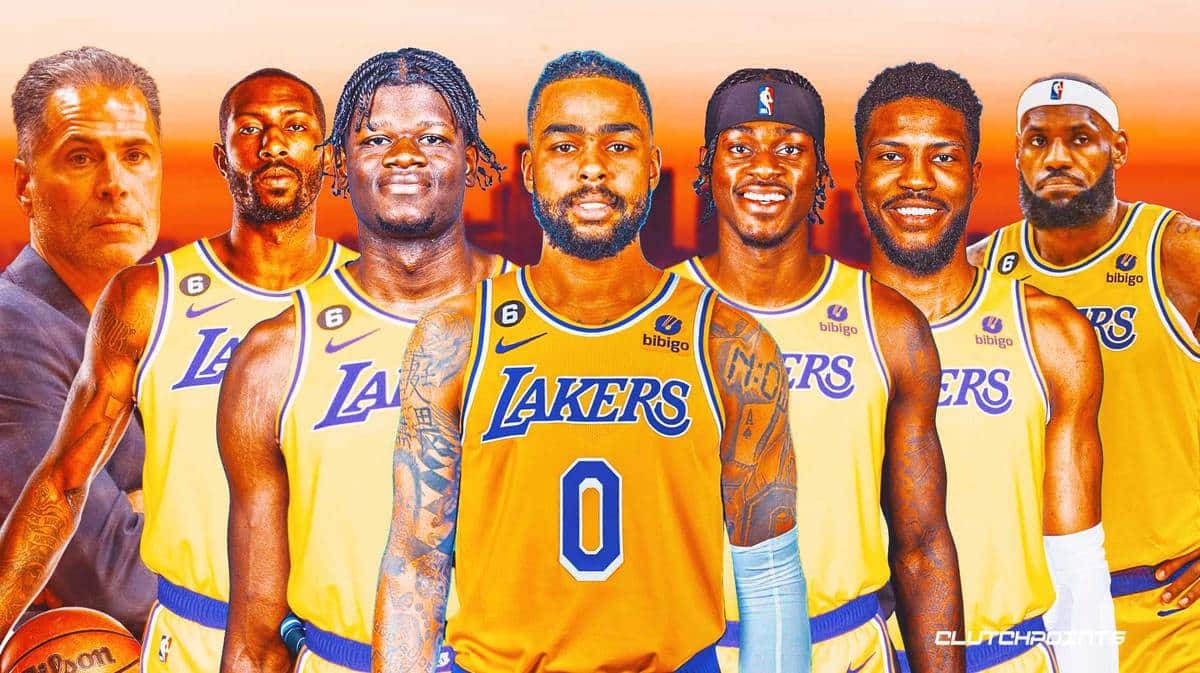The Los Angeles Lakers have a rich history, not only in their championship wins but also in the trades that have shaped the team. With a fanbase that spans the globe, the Lakers have made headlines through various trades, whether they are blockbuster deals or strategic moves to bolster the roster. Understanding these trades is essential for any fan who wishes to grasp the dynamics of the team’s evolution over the years.
In the fast-paced world of the NBA, trades can significantly impact a team's trajectory, and the Lakers are no strangers to making bold moves. From acquiring superstars to trading away promising talents, every decision is crucial. As the season progresses, the question on every fan's mind is: what will the Lakers do next? This article aims to explore the intricacies of Lakers trades, offering insights into recent transactions, potential future moves, and the overall strategy of the franchise.
Whether you are a die-hard Lakers fan or a casual observer, understanding the mechanics behind trades is vital. This article will dissect notable Lakers trades throughout history, analyze their implications, and speculate on what the future holds for the franchise. So, let’s dive into the world of Lakers trades and uncover how these decisions shape the legacy of one of the most storied franchises in sports history.
What Are the Most Notable Lakers Trades in History?
The Lakers have a storied history filled with notable trades that have defined their trajectory. Some of the most significant trades include:
- Kareem Abdul-Jabbar from the Milwaukee Bucks in 1975
- Shaquille O'Neal from the Orlando Magic in 1996
- Pau Gasol from the Memphis Grizzlies in 2008
- Steve Nash from the Phoenix Suns in 2012
Each of these trades brought immense talent to the Lakers and contributed to their success during different eras. The impact of these transactions extends far beyond the court, influencing team culture and fan engagement.
How Have Recent Lakers Trades Affected Team Performance?
In recent seasons, the Lakers have made strategic trades aimed at improving their chances of winning championships. The addition of players like Anthony Davis from the New Orleans Pelicans was a game-changer, leading to an NBA Championship in 2020. However, not all trades have had the desired effect. For instance, the acquisition of Russell Westbrook raised questions about team chemistry and fit.
Analyzing the recent trades reveals a pattern of risk-taking by the Lakers' management. They are willing to part with valuable assets for the potential of acquiring a superstar. This approach can yield immediate rewards but also poses long-term challenges, especially if the trades do not pan out as expected.
What Factors Influence Lakers Trade Decisions?
Several factors come into play when the Lakers consider trades:
- Team Needs: The management assesses the current roster and identifies gaps that need to be filled.
- Player Performance: The performance of potential trade targets is closely scrutinized, especially in high-pressure situations.
- Salary Cap Considerations: Financial implications play a significant role in trade discussions, as the Lakers must navigate the salary cap.
- Future Potential: The long-term vision for the team influences whether the Lakers pursue established stars or promising young players.
What Are the Risks Associated with Lakers Trades?
While trades can enhance a team's prospects, they also carry inherent risks:
- Team Chemistry: New players may disrupt existing dynamics, impacting performance on and off the court.
- Injury Risks: Acquiring a player with a history of injuries can be a gamble.
- Loss of Assets: The Lakers may give up valuable draft picks or young talent that could develop into stars.
These risks highlight the delicate balance management must maintain when making trades, especially in a competitive league like the NBA.
What Future Trades Could the Lakers Consider?
As the season progresses, speculation about potential trades intensifies. The Lakers might explore options to strengthen their roster further. Here are some possible scenarios:
- Acquiring a sharpshooter to improve floor spacing.
- Adding depth in the frontcourt to support their star players.
- Trading for a playmaker to alleviate the pressure on the primary ball handlers.
Each of these moves could significantly alter the Lakers' fortunes and determine their playoff success.
How Do Lakers Trades Impact Fan Engagement?
Trades have a profound impact on fan engagement. High-profile trades can reignite enthusiasm among fans, leading to increased ticket sales and merchandise purchases. Conversely, unpopular trades can lead to backlash from the fanbase, with social media becoming a platform for expressing discontent.
The Lakers' management understands the importance of maintaining a positive relationship with fans. Engaging with the community through town hall meetings and social media updates has become essential in addressing concerns and building excitement.
What Can We Learn from the History of Lakers Trades?
The history of Lakers trades offers several lessons for fans and aspiring executives:
- Patience is Key: Not every trade will yield immediate results. Sometimes, it takes time for players to gel.
- Assessing Value: Understanding the value of players and assets is crucial in negotiations.
- Flexibility: Teams must remain adaptable as player performance and market conditions change.
By studying past trades, fans can gain a deeper appreciation for the complexities involved in building a championship-caliber team.
Conclusion: The Future of Lakers Trades
The landscape of the NBA is ever-evolving, and the Los Angeles Lakers are at the forefront of this dynamic environment. With a storied history of impactful trades, the franchise continues to seek opportunities to enhance its roster. As fans eagerly await the next move, one thing is clear: Lakers trades will always be a topic of conversation and speculation, shaping the future of one of the most iconic teams in sports history.




